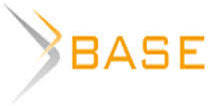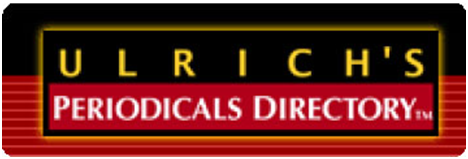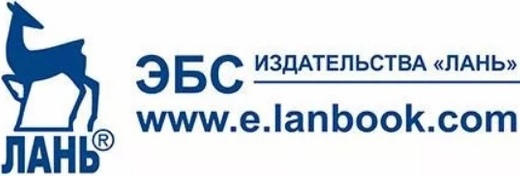FORMATION OF A TOURISM BRAND OF ROSTOV REGION FOR FOREIGN TOURISTS
Abstract
The authors of the article focus both on aspects of Linguocultural training of professionals to work with foreign tourists and on the problem of the choice of the tourism brand of Rostov Region, its historical stages, as well as the issue of the lack of a systematic approach to its formation. Keywords: training of a guide; tourism in Rostov Region; tourist branding; bilingual environment; voice communication
Keywords: Training of a guide, tourism in Rostov Region, tourist branding, bilingual environment, voice communication
Radical transformations that gripped our society in recent years, require major changes in all spheres of human activity, including the tourism sector, the most highly exposed by all the world globalization and integration processes. Tourism business has undergone certain modifications at the present stage of its development, which is a fairly independent sphere of tourist activity as a means of promotion of tourist attraction of Russian territories for foreigners. Given the fact that these changes are not yet sufficiently studied and analyzed, it is relevant and interesting to consider them and to identify the most important patterns and problems that arise in this process, as well as to identify possible ways of solving the problems identified.
First you need to identify the tourist image of the territory, which has a number of distinguishing features, that as a kind of a «calling card». They focus on the originality of the territory, its unique features and objects, which corresponds to the fragmentary perception. Another difference is that the tourist image should not only be clear and recognizable, but also publicized. Moreover, it is characterized by a special dynamism and can be updated considering the seasonality of tourist activity, as well as the tourist development of the territory and the changing needs of tourists. This forms the cores of the tourist image of the territory. They are associated by tourists with certain events, natural processes, typical activities for the region, as well as the mythologizing of places. Reanimation of the old and the creation of new myths are regarded as condition for the emergence of unique resource potential of the territory, the formation of new systems of tourist sites and objects, and most importantly, as a basis for the development of tourist brands of the territory [7].
Let us turn directly to the brief characteristics and stages of the identification of excursion brands of Rostov Region. In 2007, Thomas Gad (an international marketing expert and creator of the theory of the brand) pointed out that the positive image of a country is made by its people and products. The more your product is in demand abroad, the more its brand will be in demand. It may be not only goods and services, but also, for example, educational institutions, Mass media, museums, and entertainment. When asked what could be the tourist brand of Rostov Region, Gad said: «Rostov-on-Don is known as a scientific and educational center. You have wonderful young artists, they need help to promote their works in the global community. Long since Rostov-on-Don was considered a trading town and gateway to the Caucasus. Then it is necessary to develop the idea that Rostov is a kind of connecting link, the «Port of five seas». At the same period, Daniel Vinuesa, director of European funds, city government in Madrid, said that, unfortunately, the knowledge of Spaniards about Russia is limited to Moscow and St. Petersburg; they know neither the Don nor Rostov-on-Don. Yes, they are aware of Scythian gold and the Cossacks, but Spaniards do not associate them with the Don. Therefore, Scythian gold can also be offer as an option for the tourist symbol of Rostov Region [11].
Most foreign consumers do not know the attractions of Rostov Region. However, it is sad that our compatriots know little more. Few people know such wonderful towns as Novocherkassk and Taganrog with their rich cultural and historical potential; Starocherkassk with its monastery; the lake formed after the flooding of the stone-plastushki quarry with clean groundwater in Kamensk-Shakhtinskiy where a magnificent tourist complex «Eldorado»emerged.
In the lowland plains of Rostov Region with its unique natural phenomena and extremely picturesque territory, the Donetsk mountain ridge was formed, the only place in the area where the exceptional relief ruggedness creates a complete impression of the mountainous country in miniature. In the valleys of small rivers, rapids and small waterfalls were formed. At the confluence of tributaries in the Seversky Donets and the Don sandy areas were formed. Especially known is the Kundrjuchensky sandy landscape. For sports and cognitive tourism, the most interesting are the outputs of Cretaceous rocks along the rivers Don, Glubokaya, as well as the output of quartzite in the northwest region. These areas are favorable for hiking, weekend breaks and sport climbing [5].
In just a few days in the Rostov land, a leading international expert in the field of territory marketing Pavel Morozov was able to identify the settlements, which, in his opinion, have many attractive features for the implementation of the tour branding. First of all, it is the capital of the Southern Federal Distric,tthe city of Rostov-on-Donwhich consists of two main areas – the old fortress (from which the city grew), as well as a former Armenian settlement (also which later became the city) Nakhichevan-on-Don. Now the city is an example of tolerance there quite neighborly coexist representatives of dozens of nationalities. You should pay attention, according to the guest, to the already existing brand, «Rostov-Papa». Giving it not criminal, but the positive meaning «Let it be a male Russian city» [4].
Larissa Vinnikova, a managing partner of the consulting group «Contact», an official representative of the company BRANDFLIGHT in southern Russia, is sure: since the Soviet times Rostov Region has the image of an industrial region. Indeed, from the time of industrialization, the Don region has developed precisely in this direction, and our factories are known throughout the world: Rostselmash, Tagmet, Rostvertol, NEVZ, Beriev Aircraft Company.However, over the centuries the territory is famous for its black soil and fruits grown on this land.
Yuri Evchenko, an executive director of the club «2015» claimed that the uniqueness of the tourism brand of Rostov Region should be based on the underlying values of the Cossacks, for example, religious and ethnic tolerance. Because Cossacks were formed in the conquered and mastered territories where Russian, Ukrainians, Greeks, Armenians etc. have always lived together.
As early as 2008, the following statement was made by Deputy Minister of Economy, Trade, International and Foreign Economic Relations of Rostov Region Anna Palagina: «In the mass consciousness of Russians Rostov Region has not yet been associated as a tourist and recreational area. Therefore, it is necessary to form a positive image of the region and its tourist brand. «The Don Silver Horseshoe» – perhaps with these words Rostov Region will be associated with Russian and foreign tourists» [10].
Sometime later, the authorities of Rostov-on-Don began to develop the «Don» brand. And on October 1, 2011, in Rostov-on-Don there was arranged the first tourist ethnographic festival «Festival of the River Don» which ended the events of the summer season. «This is a spectacular event dedicated to one of the main tourist resources – the Don River, which according to the research, Rostov Region is famous for. Using the river Don brand, we attract a large interest to the region by the tourists» – said Svetlana Abdulazizova, head of Tourism Development of Investment and Entrepreneurship Government of Rostov Region [3]. In addition, in the same year, there raises a question of the restoration and recovery of archaeological and historical sites, as future tourist objects, these were Kobyakovo and Temernitskoye settlement, Tanais, Leventsovsky burial mound, Dmitry Rostovsky fortress, Karataevskaya fortress – these places of interest were mentioned by the Deputy Mayor of Rostov-on-Don Vitaly Zolotukhin.
In 2012, they considered the basic resources of tourist potential of Rostov Region – the cultural sightseeing associated with the names of the world famous natives of the Don – Mikhail Sholokhov (in May 2012, the annual festival «Sholokhov Spring» in the village Vyoshenskaya was visited by more than 100 thousand people), Anton Chekhov, Anatoly Kalinin, Alexander Solzhenitsyn. However, it is certainly not everything [6]. The Don Governor Vasily Golubev in his interview admitted: «The region has developed a set of routes. «The Don Silver Horseshoe» has become a tourist brand of Rostov Region.» In his words, there has risen an interest to the historical reconstruction of the Azov siege seat of the Don Cossacks in 1641, which is held annually in Azov in early August, to ethnographic gastronomic feasts «Don Vine» (Ust-Donetsk region) and «Don Ukha» (Azov region). Moreover, in the Don museums there are unique collections of findings of gold of the Scythian-Sarmatian period, an excellent ethnographic collection representing the diversity of national cultures of the Don region, subjects of Cossacks` life, paintings of famous painters of the XVIII-XX centuries. On the territory of Orlovsky and Remontnensky districts, the State Natural Reserve «Rostovsky» is located – a unique natural standard of wild nature and the valley steppe Primanychya, which in the early spring is covered with flowering carpets of primroses, in April and May – with bright colors of wild tulips blossoms, in the summer – with silver feather grass – a «king of the steppe grass,» in autumn, at the ponds migratory birds gather in flocks. Today it is the only European steppe zone, where the wild horses – Don Mustangs live. The total area of the reserve, which has a federal status and is protected by UNESCO, is 9531.5 hectares.
Besides, it is possible to consider a few contemporary trends that may influence the formation of the tour brand because they are bright features in the image of the Don region:
- Festivals: folk and theater festivals, playing historical reconstruction. The most famous: the International literary and folk festival «Sholokhov Spring», International Kayalski Reading, National Festival of military-historical clubs to commemorate the «Azov seats» 1637-1641 years, and others;
- -Industry: excursions to their businesses organize JSC «Aksinya» (Semikarakorsk ceramics), SC «Rostselmash», OJSC «Brewing Company» Baltika»;
- water tourism: boat cruises to the historical centers of the region, yachting and boating in Taganrog Bay of the Sea of Azov, rafting and kayaking on the Don and the Seversky Donets, familiarity with the Tsimlyansk sea expanses and the Proletarsky and Veselovskiy water reservoirs, active rest on the sandy beaches of the southern Taganrog Bay coast of the Azov Sea;
- Ethnographic and rural tourism: the traditional Cossack yard established on the territory of the State Museum of MA Sholokhov in Vyoshenskaya. Ethnographic «Cossack» program held in Razdorskiy Ethnographic Museum-Reserve and Farm Puhlyakovsky (Ust-Donetsk region). Annually held regional ethnographic festival «Don Vine» (farm Puhlyakovsky Ust-Donetsk region) and folk-theatrical performance «Feast of Don fish soup -ukha» (Kurgany Farm Azov district);
- Hunting and fishing. In Rostov Region, hunting is permitted for the main types of birds, ungulates and fur-bearing animals. The area of hunting grounds is 186.4 thousand hectares. The basins of the Don River and its tributaries are home to over 90 species of fish. The Sea of Azov, the river Don, Tsymlyansk, Proletarskoye and other reservoirs, Lake Manych-Gudilo are centers of amateur and sport fishing.
According to Olga Demishin, in Europe they are already aware of our Scythian monuments, Scythian gold, they heard the legend of the Amazons, they are familiar with the excavations of Tur Heyerdal in the Azov region, and with his «Don» theory of the origin of the Vikings, they know about the ancient Greek cities. However, not only history, but also modernity brings its colorful amendments to the specific way of our region. These supplements to the image refer perhaps the largest in Russia Golf Club with the area of 140 ha. The list of the world's values on the territory of our region includes the building of the Rostov Drama Theatre named after Maxim Gorky, which is among the architectural monuments of UNESCO, and Starocherkassk Historical and Architectural Museum-Reserve which is included in the UNESCO Directories [1].
Our region is undoubtedly attractive for tourists from all over the world, so in 2013 once again raises the question of tourist brands of Rostov Region because quite a long time it has been considered that, in fact, there is no tourism in Rostov-on-Don. However, the director of the tourist company «Reina Tour NTV» Tatiana Nechepaeva believes that the city and Rostov Region have a large hidden potential: for example, 200 kilometers of coastline of the Azov Sea, the unique nature reserves, unique culture of the Cossacks, Greeks, Scythians, Armenians and notes the soulfulness of the city and its southern flavor ... In addition, tourists, especially foreign, really like the so-called rural tourism, and AgroFarms emerging in the vicinity of Rostov-on-Don and its region where you can enjoy authentic cuisine of the Don, learn handicrafts, horse grooming, as well as acquire useful skills, for example, learn how to make jam for winter ...
In 2014, at the XXII Olympic Winter Games in Sochi, Rostov Region presented the historical, cultural and natural attractions of the Don region. The emphasis was placed on tourism brands, ethnographic, natural originality of the Don Land. The central image – The Quiet Don Cossacks and the Don natural treasures, historical, cultural heritage, local lore puzzles. Various thematic blocks, traditionally presented the works of A.P. Chekhov, M.A. Sholokhov, the epoch of Peter the Great in the Don history, fabulous Lukomorie, tourist centers of the Don (Rostov-on-Don, Novocherkassk, Starocherkassk, Tanais, Taganrog, Azov, etc.), folk crafts. The Azov campaigns of Peter I, the foundation of Taganrog, which could become the capital of the Russian Empire, and eventually became a «dress rehearsal» of St. Petersburg. The unique collections of museums in Azov and Taganrog: a mammoth skeleton paleontological sensation, a unicorn skeleton (Caucasian Elasmotherium) – these are the world's only exhibits of this kind [10].
Changes were made in the museum village Starocherkasskaya. The novelty was the opportunity to celebrate a memorable date with the project – a «memorable day in your life» – celebrating important events of life in the atmosphere of the museum-reserve [3].
Undoubtedly, the creation of another excursion brand – «Rostov agglomeration» – is of interest. This agglomeration is to become the largest educational center, a strategic transport hub, one of the largest by the volume of air and railway transportation, cultural and sports center in southern Russia. The structure of the Rostov agglomeration includes five cities: Rostov-on-Don, Bataisk, Azov, Taganrog, Novocherkassk and seven municipal districts: Neklinovskiy, Rodionovo-Nesvetaevsky, Myasnikovsky, Azov, Kagalnitskaya, Aksay and Oktyabrskiy. On their territories, there are 43 rural settlements, 540 villages and one town (Aksai). As part of the Rostov agglomeration, there was formed a special economic zone, which includes Azov and Starocherkassk tourist
The statistics show that for tourists with high levels of queries on satisfaction the needs in cognitive, ethnographic and rural tourism will likely be repeated visits to the region and forming with their help quite favorable opinion about it. It should be noted that the creation of the brand should carry an umbrella character for the entire region, i.e. the more brands we have the better. This is due to the need to create a simplified image of the region in the minds of tourists. The
Therefore, in communication of different cultures with one another each of them must be able to present the facts in an accessible level of native culture, correctly understand the facts of foreign culture and act accordingly. It is focused on the training of qualified guides, the development of their professional culture, a sense of cultural identity that will help to represent their country and their region in terms of intercultural communication.
From the diversity of information material for the branding of Rostov Region as a number of tourist territorial images, you need to select the most interesting and significant. This requires the use of constructive abilities of a guide. They are shown in the ability to select and properly arrange the sightseeing material efficiently and in an accessible way to bring it to the audience, taking into account the differentiated approach to excursions. Differentiation there must determine the specificity of the cultural perception of this or that country by foreign tourists.
When organizing tours for foreign tourists the task of the guide is to transfer in a foreign language the knowledge of the native culture and its values. In this connection, it is a relevant process of training guides speaking in a foreign language, organized in a cultural context, or technologically tuned job training of a guide as an interpreter. In this regard, the basis of professional competence of a guide is a cultural component, which is a part of the regional component. Excursion texts are made by analysis, comparison, and generalization, building their own statements by analogy. The lexical content of the texts and exercises constitute speech funds required for participants of the dialogue of cultures in different situations of communication and language means expressing regional specificity. In the source of the content in teaching guide speakingusing the regional component important are the facts of the native and foreign culture, revealing the essence of discussed problem and are the most appropriate to a particular personality and activity of a guide. The guide stands in relation to the tourists in the following roles: informatory, interlocutor, counselor, emotional leader. The guide’s speech is designed for other people`s understanding, so it should be a presentation of ready, logical and well-formulated thoughts. In addition, in the conduct of the tour in the bilingual environment where there is no synchronous decoding of oral speech, his attitude to what the guide says he can demonstrate using non-verbal means: facial expressions, gestures, intonation, tone, rhythm and tempo of speech. Of course, the competence of a guide, working in a foreign language (or with an interpreter) is not limited to the language and speech competence. Translation is complete only if a tour guide (interpreter) has the necessary knowledge of direct relevance to the themes of the tour, and he/ she succeeded in knowing the depth of the culture, people, and language proficiency. The language reflects a national vision of the world, its uniqueness associated with the geographical location of the country, its history, religion, traditions and customs. Therefore, the guide who speaks a foreign language and the guide-interpreter are required to begin comprehension of culture of the people with the features of its reflection in language, to skillfully combine cultural performances of two different nations.
In accordance with this, for the development of the ability to talk about their own culture in a foreign language, it is offered to use three stages of mastering the culture with their underlying mechanisms:
- The stage of development of the region's cultural heritage (non-mandatory mechanism of suggestion);
- The stage of comprehension of own cultural identity (emotional mechanisms of infection and critical reflection phenomena of cultural heritage and culture of our days);
- The stage of development of ability to represent native culture with its regional specificity in terms of intercultural communication (the mechanism of inspiration)
Thus, the stage of development of the cultural heritage of the region suggests guides should be aquainted with the facts of native and foreign language culture in the native and foreign languages. Rows of traditions, artistic images, etc., should be used in the proposed tour. Thus, mechanism of critical thinking is switched at this stage, communication requires extreme concentration of knowledge for persuading argument. Of interest are oral and written statements of cultural media of the country of the studied language like the facts of their native culture and about the facts of a different culture. Contained in texts such material provide a basis for comparison and analysis developing the ability to represent the native culture with its regional specificity in terms of intercultural communication – involves both monologue and dialogue. The mechanism of creative inspiration is possible only in a sufficiently complete interior «emancipation» of the personality of the speaker, achieved due to the development of verbal skills and relatively mature approach to the cultural foundation of humanity, and on this basis – to the preparation and conduct of the tour. [2]
This should be reflected in the design of the language of the text on a particular foreign language, and in emphasis in the presentation of a territorial tourism image. This demonstrates the specificity of the interaction of different cultures. In general, problems of training guides are associated primarily with low cultural level of the students mastering undergraduate programs for socio-cultural service and tourism. Cognitive and axiological backgroundincludes not only encyclopedic knowledge of elective subjects, but also certain personality traits (teaching artistry, the creative component of personality, oratory, and others), the formation of which is due to the content and timeframe of university curricula. In this regard, there is a need to develop programs of additional vocational training outside of the educational process.
In addition, the process of branding in Rostov Region, in our opinion is slow due to the lack of attention to it from the side of government structures, or rather an administrative mismatch: excursion work, as well as tourism migrate from one department to another.The regional program of tourism development in Rostov Region in 2011-2016, was designed by the initiative and with direct participation of the Department of Investment and Enterprise of Rostov Region lost its urgency in 2014, the responsible executor of now operating program «Development of Culture and Tourism» is the Ministry of Culture of Rostov region. In the second it is the preservation of cultural and historical heritage of Rostov Region, ensuring citizens' access to cultural values and participation in cultural life, the realization of creative potential of the population of Rostov Region; and further, formation of a competitive tourism industry, contributing to the socio-economic development of the region [9].
Who is responsible for the development of tourism and tourist branding correspondingly: Department of Small and Medium Enterprises and Tourism of Rostov Region; Department of Tourism and Consumer Protection Department of the economy of the city of Rostov-on-Don; department of museum management, libraries and cultural and leisure institutions of the Ministry of Culture or the professional community?
Thus, the formation of the tourism brand of Rostov Region for foreign tourists should, in our view, be carried out in terms of a systemic approach, under which it is necessary: to structure a system of state regulation and coordination in this field; arrange resource priorities; monitor the formation and development of tourism in the process of interaction of images of the object (territory) andsubject (tourist); provide personnel support.
















Reference lists
1. Natalia Burdykova Don brands: Quiet Flows the Don or Rostov City // «Journal of Economics»: an electronic journal, 2007. № 2 (9) URL: http://www.donbiz.ru/archive/articles/841.html (date of access: January 19, 2015).
2. Karic LV, Karpovskaya NV Communicative aspect of excurssion activity // Research and Education and Applied Journal North – Caucasian Research Center«Humanitarian and socio-economic science», 2005. № 1.
3. Alina Klyuchko For five years Rostov Region was visited by more than a million of tourists//project of the Rostov news agency. 14 June 2014.
4. Ilona Kuvaldina Patchwork brand of Rostov Region// Rostov official07.03.2012. Number 10 (901)
5. Kuz'menko MA Prospects of branding of the region by creating a monocentric urban agglomeration on the example of the city of Rostov-on-Don URL: http://region-brand.ru/47-articles/90-perspektivy-brendirovaniya-regiona-putyom-sozdaniya-monotsentricheskoy-gorodskoy-aglomeratsii-na-primere-g-rostova-na-donu appeal: 20.01.2015).
6.KutarevO.Yu. Regional aspects of tourism and recreation activities in Rostov Region«sociosphere»: an electronic journal 2013.№ 4 URL:http://sociosphera.com/publication/journal/2013/3085/regionalnyj_aspekt_organizacii_turistskorekreacionnoj_deyatelnosti_v_rostovskoj_oblasti/ (date accessed: 20.01.2015).
7. Nikanorova EV «Formation of tourist image of the territory: the case of Rostov Region» Author. dis. ... to the candedate of geog. Sciences. Moscow, 2009.Scientific Library of dissertations andURLhttp://www.dissercat.com/content/formirovanie-turistskogo-obraza-territorii-na-primere-rostovskoi-oblasti (appeal: 20.01.2015).
8. Regionai long-term program of tourism development in Rostov Region in 2011-2016 URL http://www.donland.ru/Default.aspx?pageid=92809( appeal: 15.02.2015).
9. Resolution of the Government of Rostov Region from 25.09.2013 № 587 «On approval of the state program of Rostov Region» Development of Culture and Tourism «URL http://www.donland.ru/Default.aspx?pageid=122998
10. The development of tourism in Rostov Region URL http://turizm-art.ru/sovremenny-e-perspektivy-razvitiya-tu/ (date accessed: 24.01.2015).
11. «The Don Silver Horseshoe» should become tourist brand of Rostov Region 27.02.2008) URL http: // www. dontourism. ru /http: // in. dontourism. ru / laws. aspx. (date accessed: 24.01.2015).